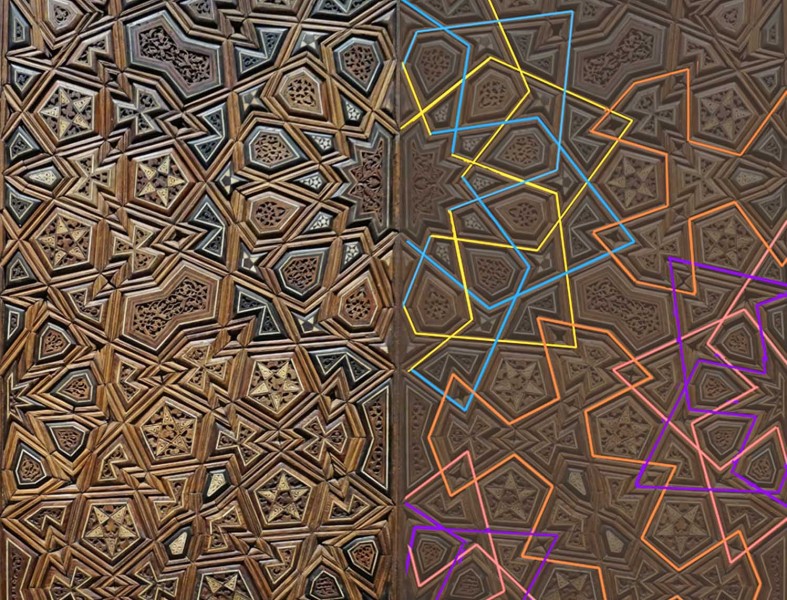I’m fascinated by the way that spectacular aesthetic effects often seem to involve bamboozling our everyday strategies for making visual sense of the world. This is a beautiful example, a detail of interlace decoration on a 14th century (Western dates) Mamluk Period door in the Louvre from the Al-Maridani mosque in Cairo. (I’ve shown other examples of a role for bamboozled perception in aesthetics in an earlier post, and in the Illusions and Aesthetics category to the right).
As you can begin to see in the image, where I’ve combined the interlace pattern on the door with a schematic analysis of its reflection, the interlace we see in the door is a segment of a rosette pattern that repeats across a wider field. But that’s not obvious at all when you just see the door. The artist has not emphasised the lines of the design, but rather the infills – stars and other little geometric tiles. We’re distracted from grasping the overall geometry by all the assertive, enclosed shapes, with their heavy outlines. And the overall shapes that do jump out for me are the beautiful curves that run from top to bottom of the image, which also distract attention from the hexagonal geometry of the pattern. For more analysis of the pattern and the fabrication of the doors, see below, but first, here’s the whole door.


